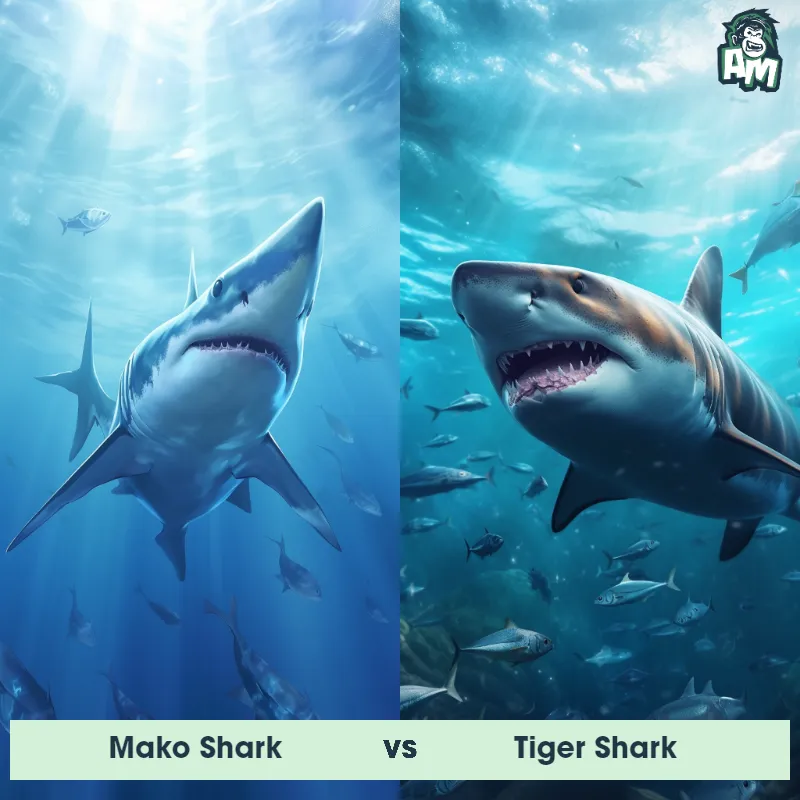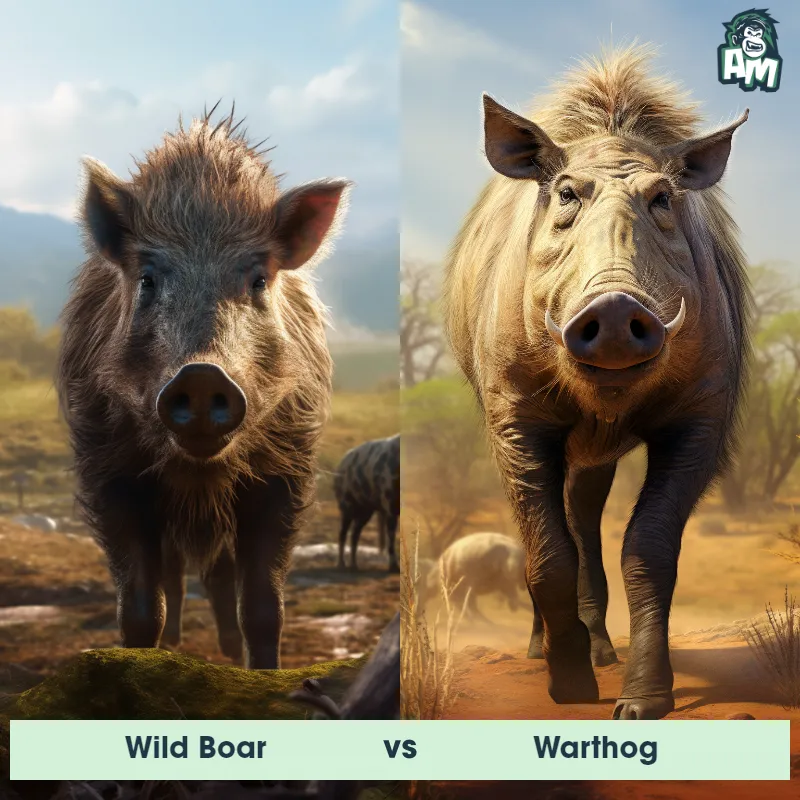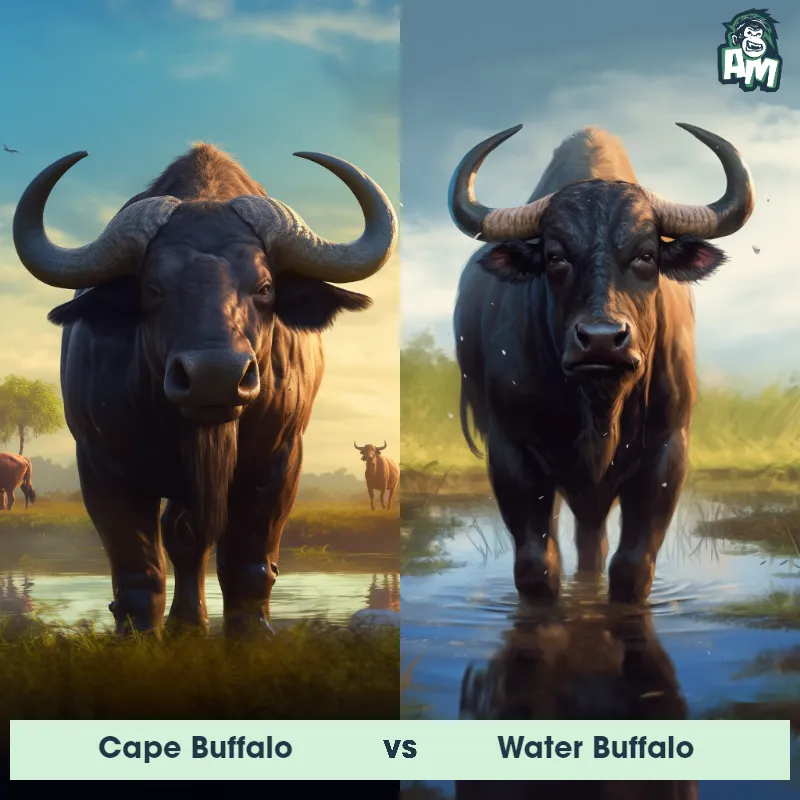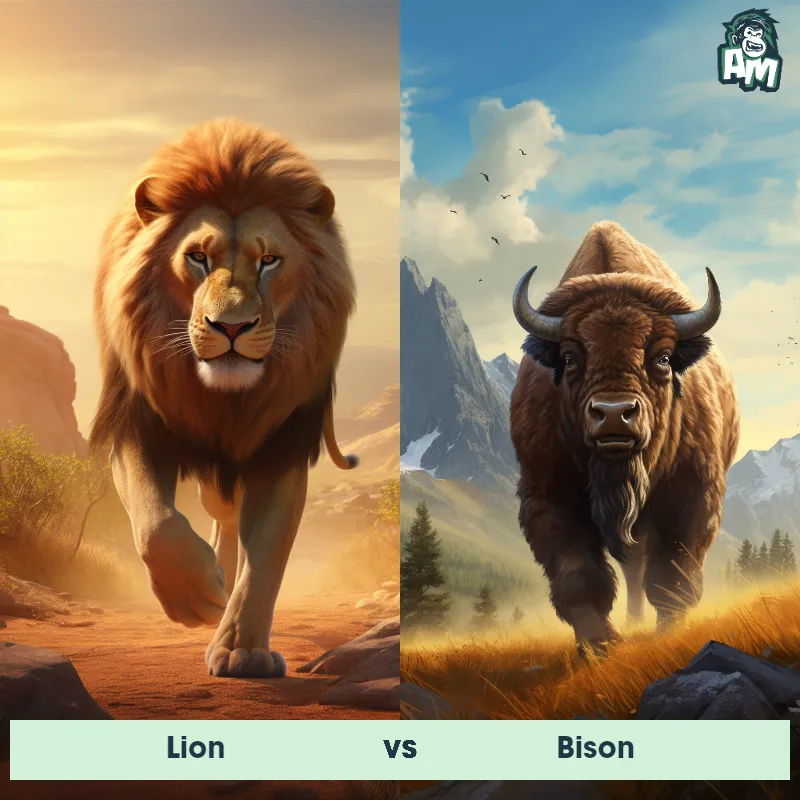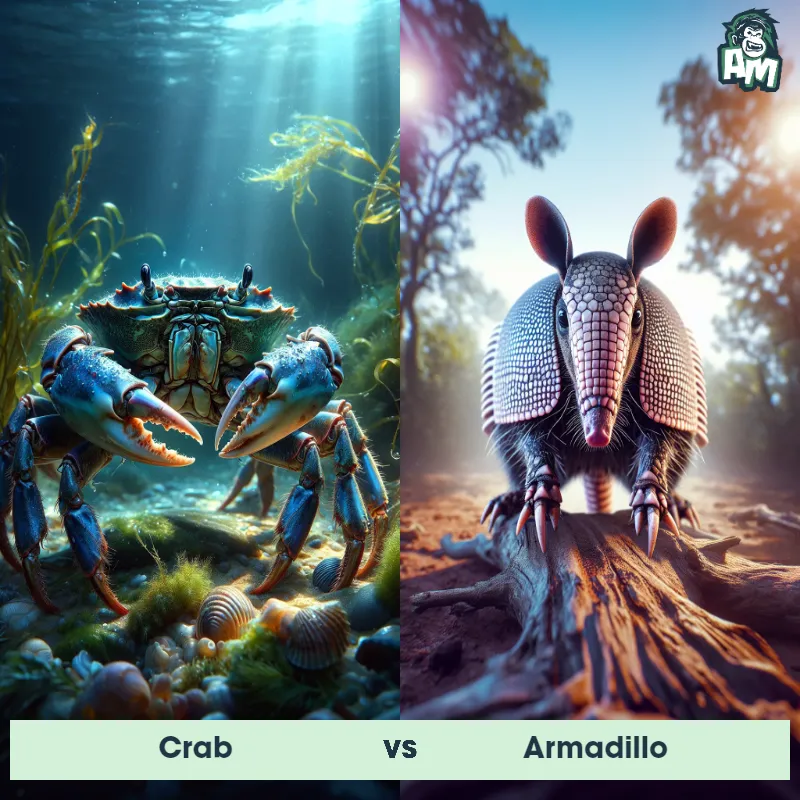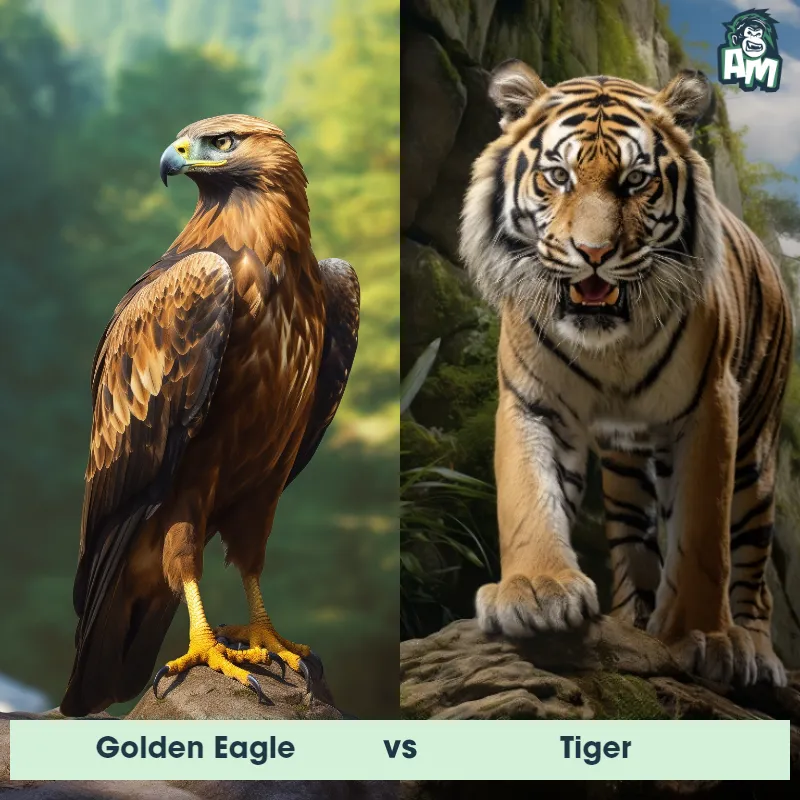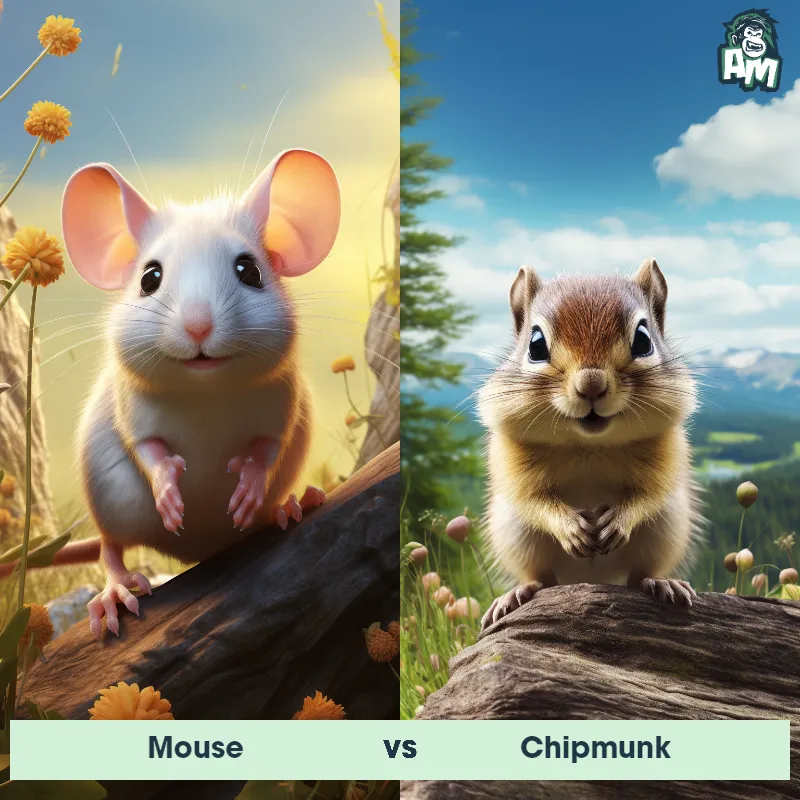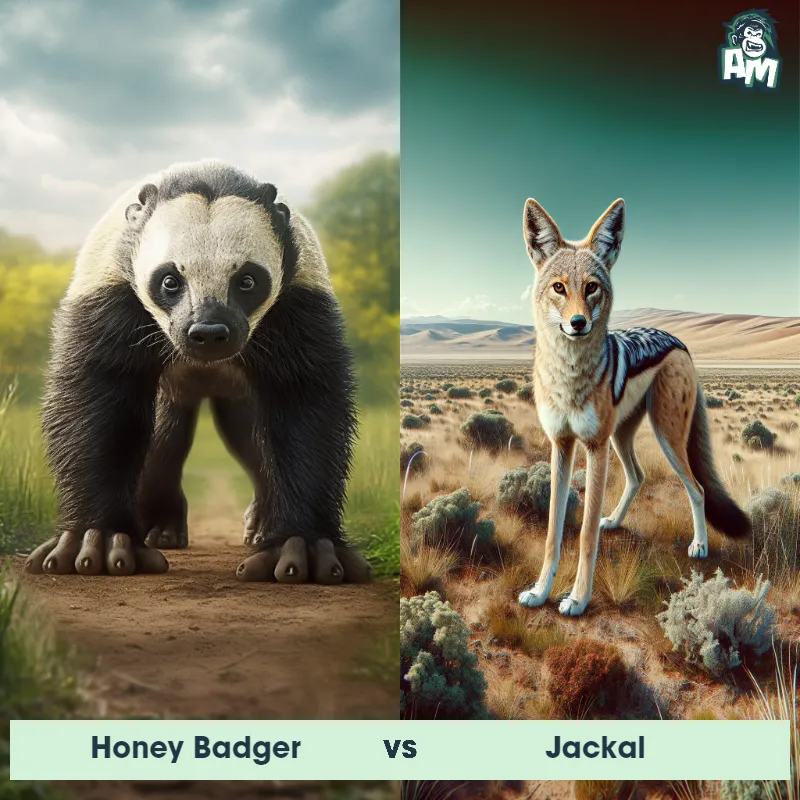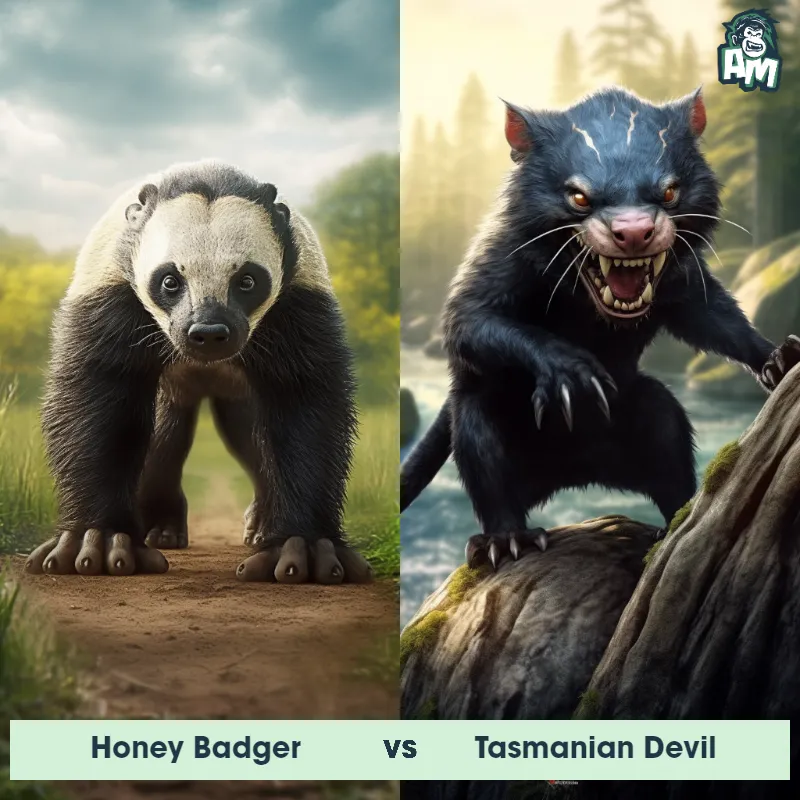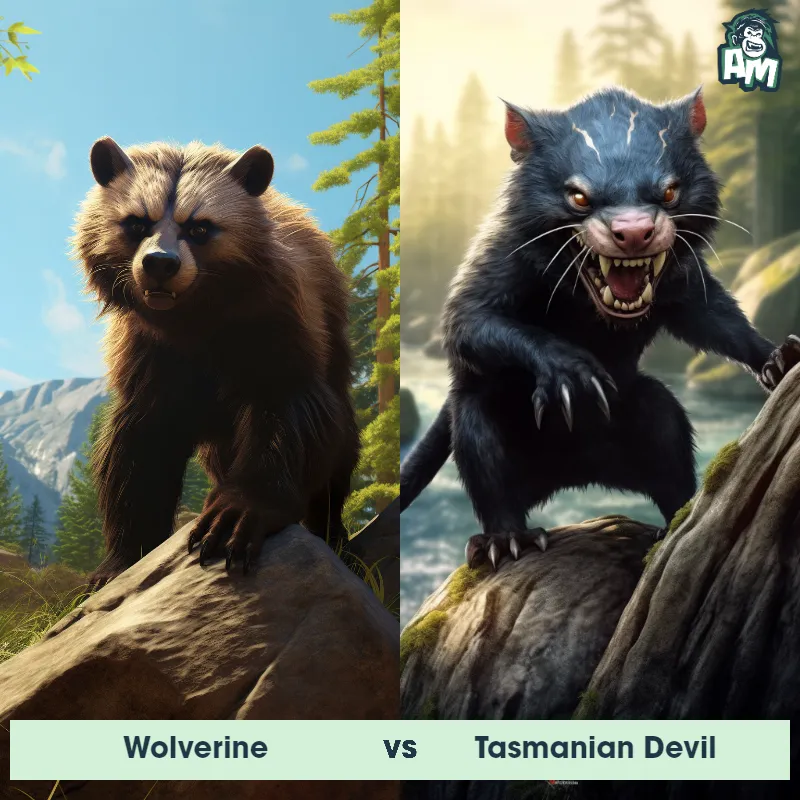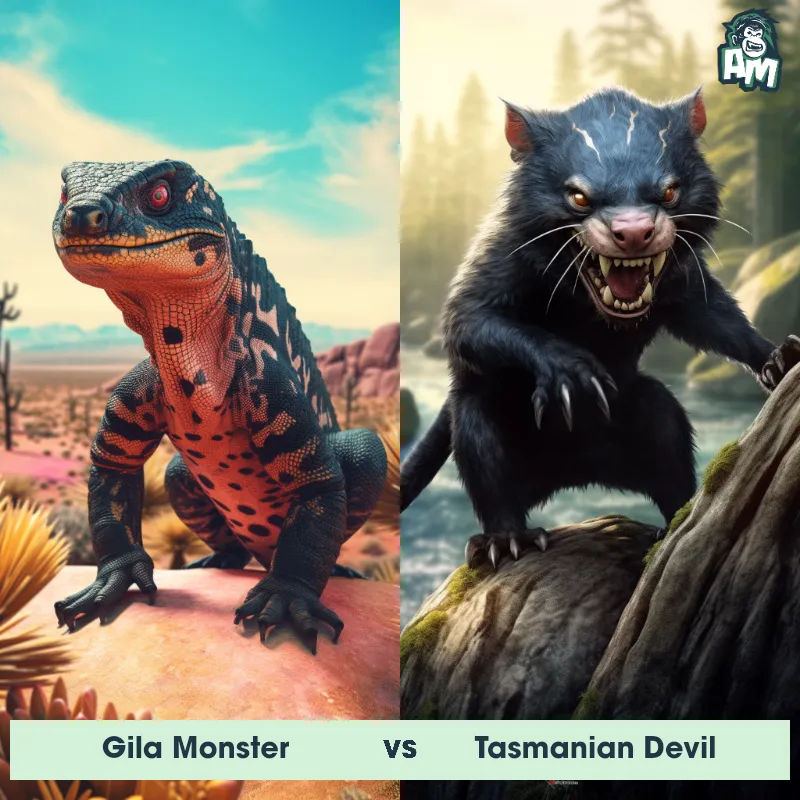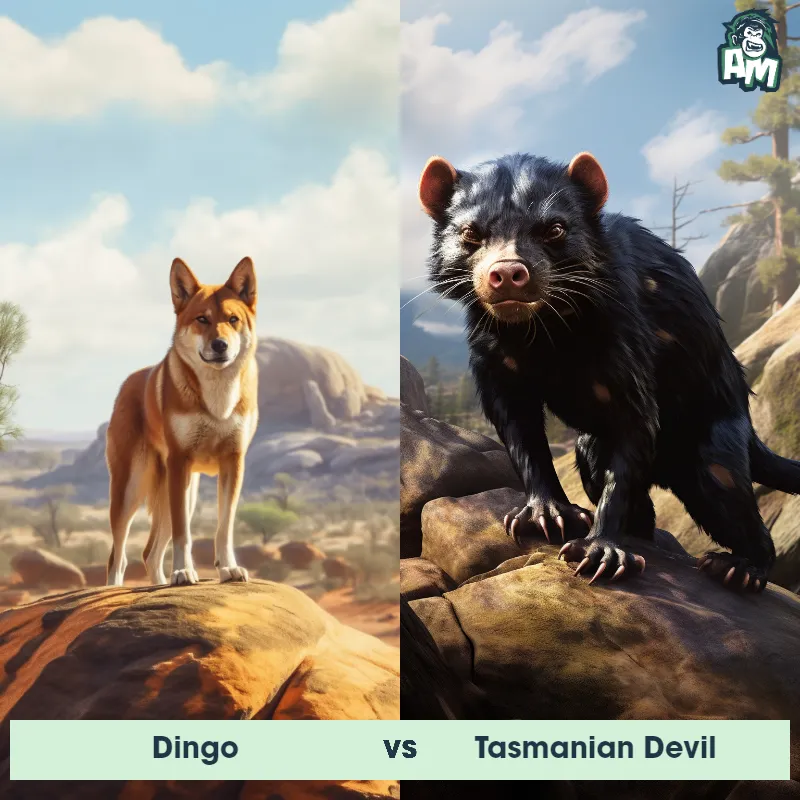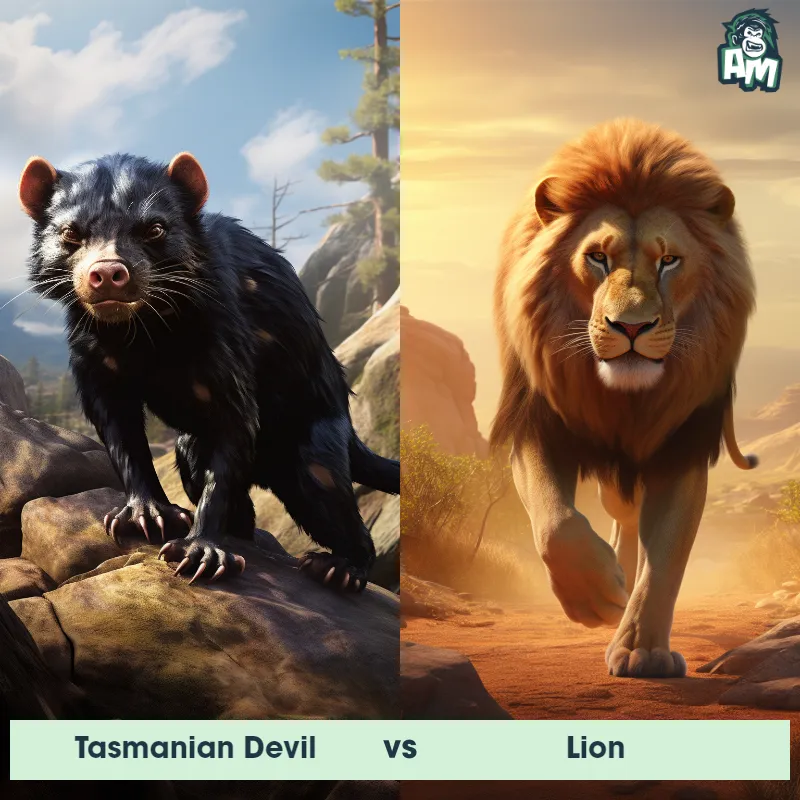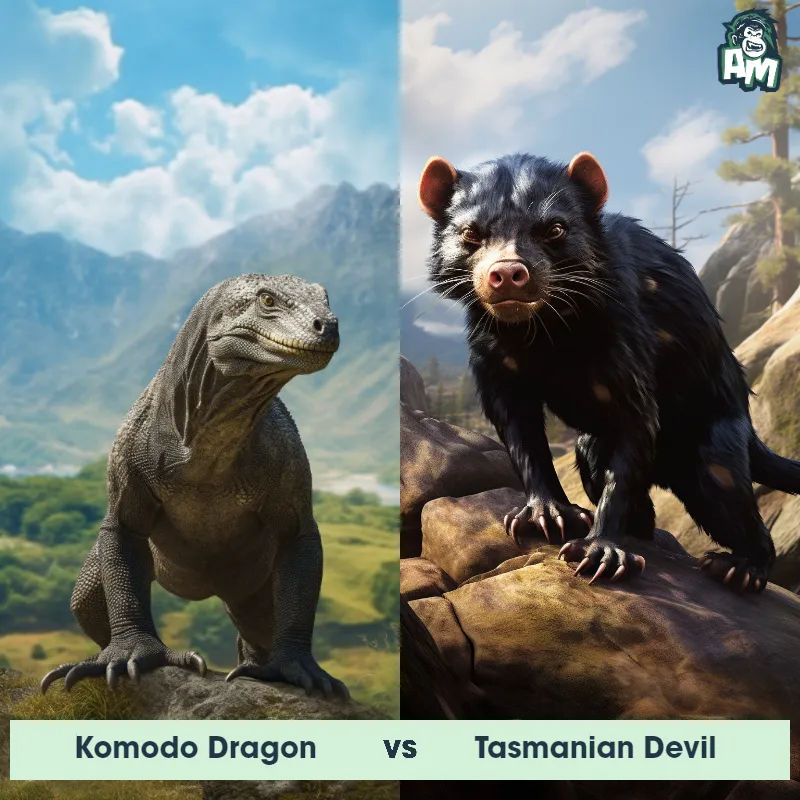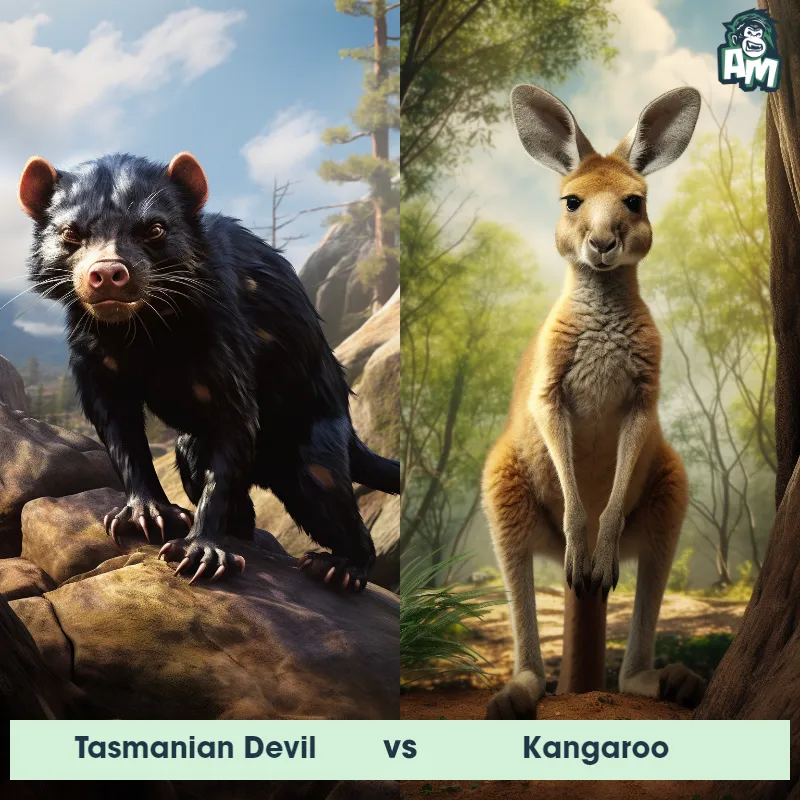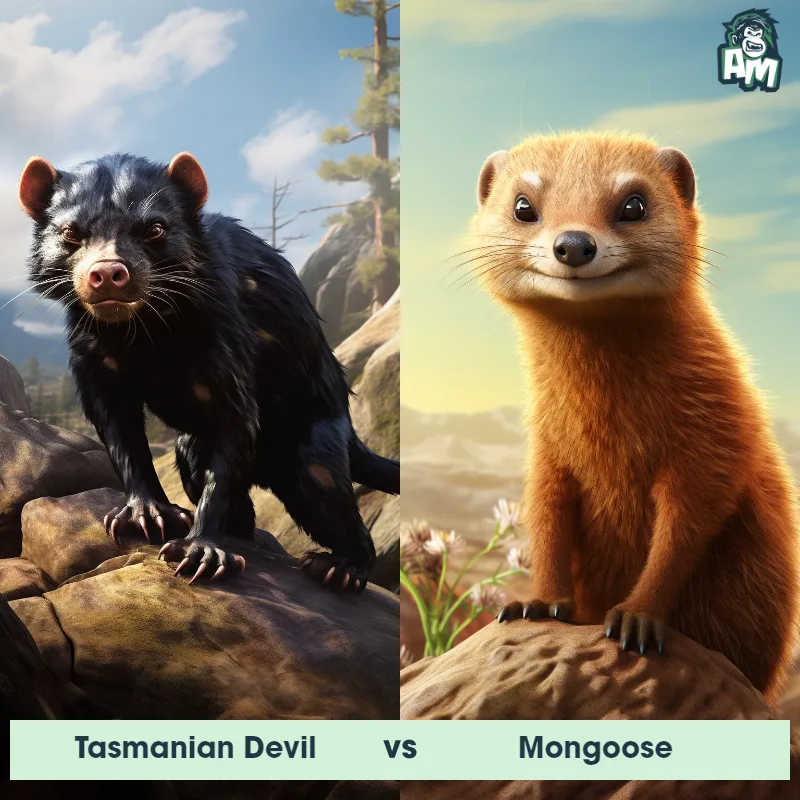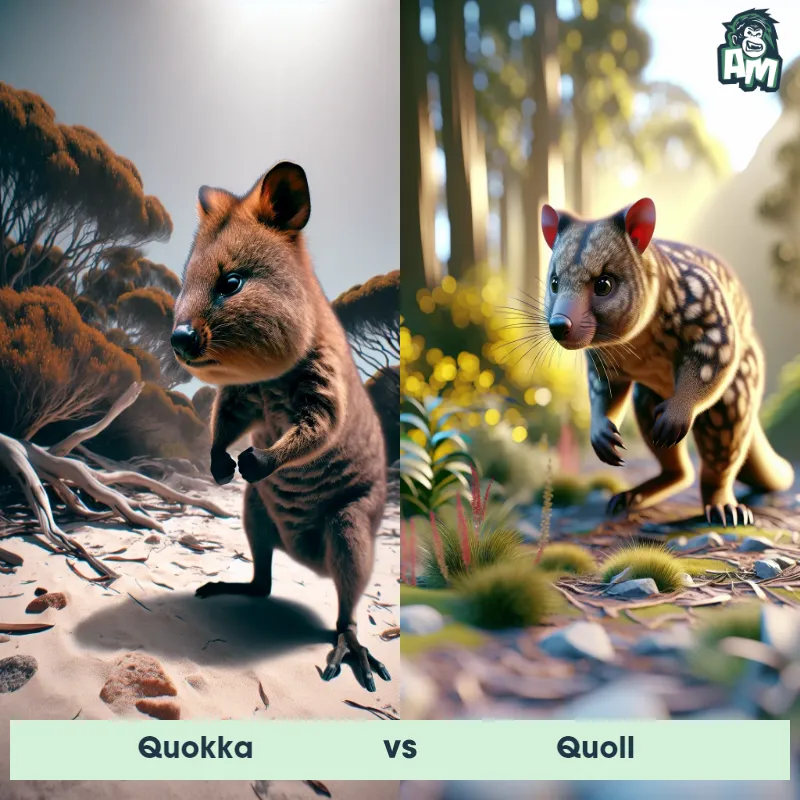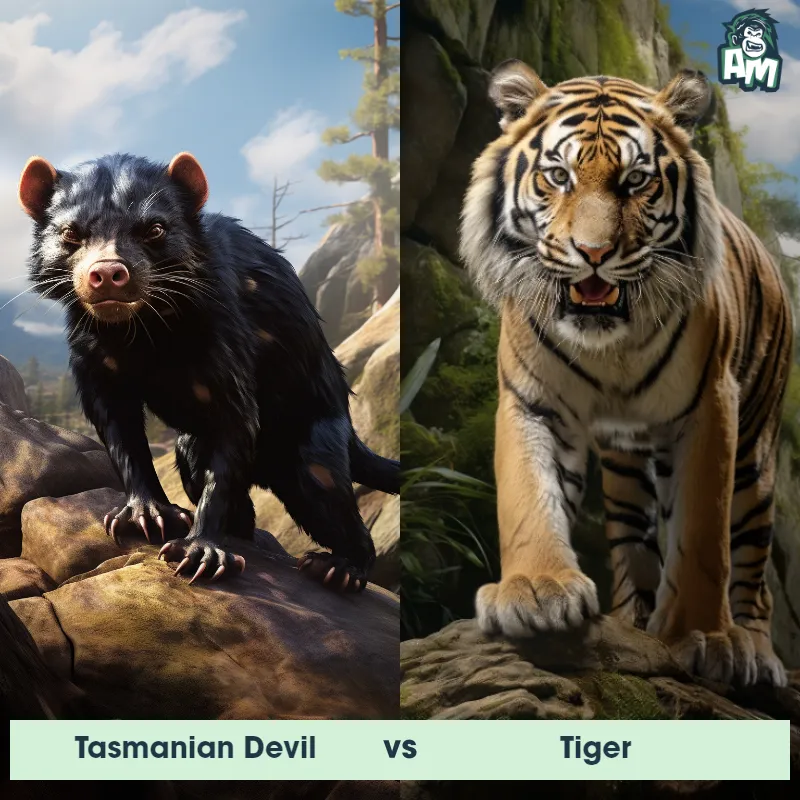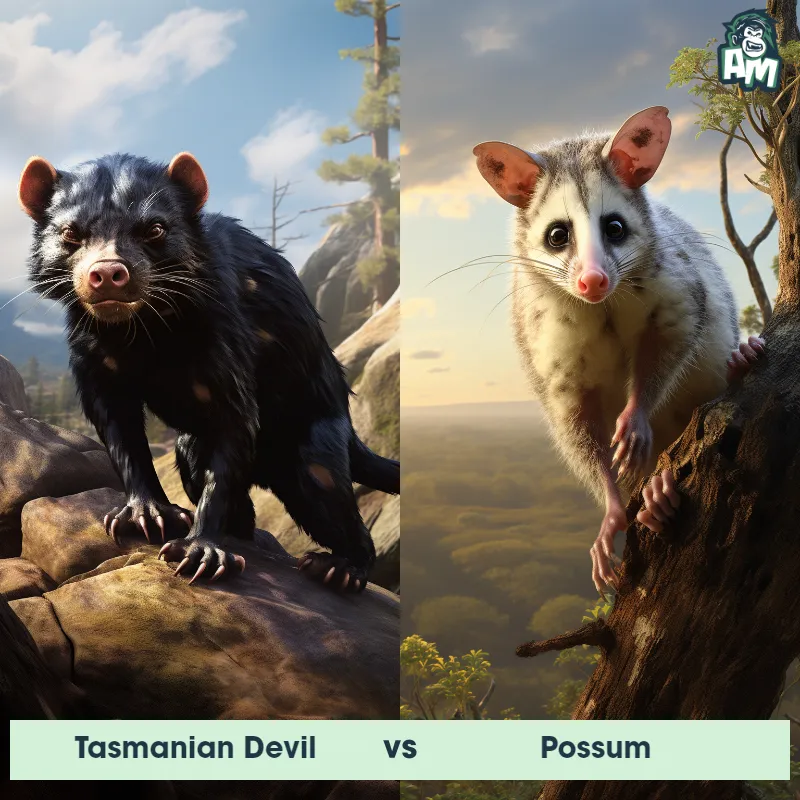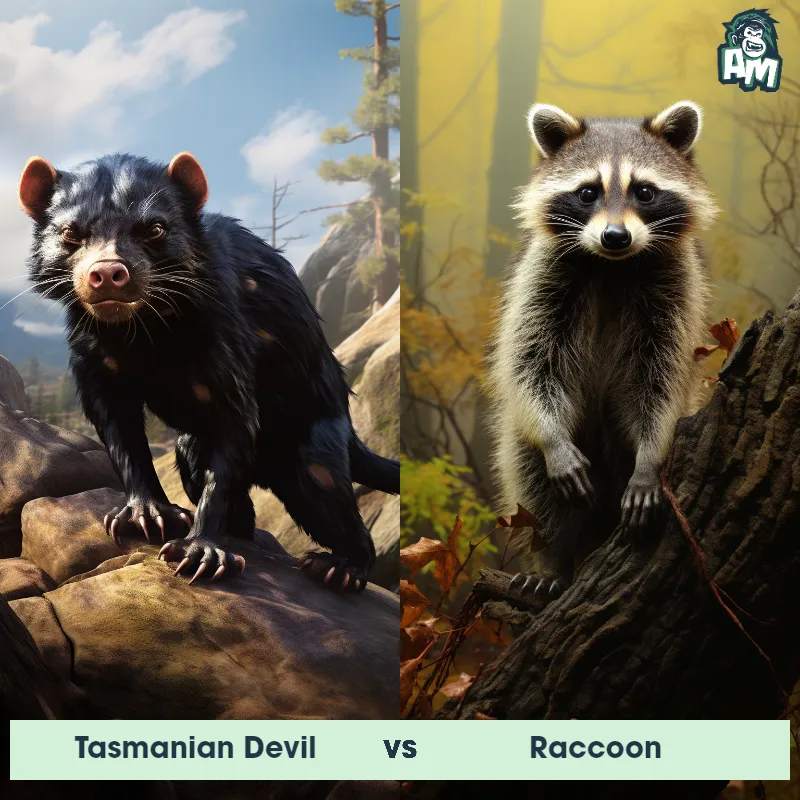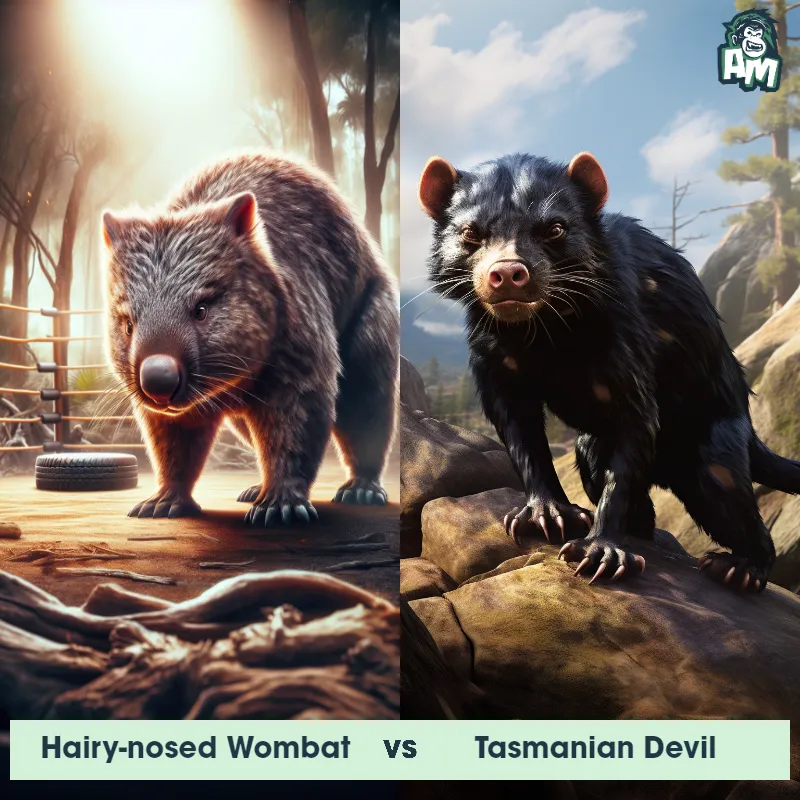Tasmanian Devil vs QuollSee Who Wins

Ladies and gentlemen, welcome to this thrilling matchup between two fierce creatures of the Australian wilderness! We have here a Tasmanian Devil and a Quoll, both known for their aggression and speed. Get ready for a three-round fight filled with ferocious attacks and strategic defenses. Let the battle begin!
Contender 1: Tasmanian Devil
The Tasmanian Devil is a carnivorous marsupial native to the island of Tasmania, Australia. They have a stocky build, black fur, and a distinctive white stripe on their chest. Tasmanian Devils are known for their powerful jaws and sharp teeth, which they use to crush and consume bones and cartilage. They are also known for their loud, aggressive vocalizations, which earned them their name.
Fun Fact: Tasmanian Devils are known for their unique way of communicating with each other, which involves a range of vocalizations including growls, screeches, and screams that can be heard up to a mile away.
Contender 2: Quoll
The Quoll, also known as the native cat or marsupial cat, is a carnivorous marsupial found in Australia, Tasmania, and New Guinea. They are small to medium-sized mammals with a body length ranging from 23 to 66 cm, and a tail length of 20 to 35 cm. Quolls have distinctive spotted fur patterns, varying from yellowish brown to dark brown or black, with white spots or stripes. They have a pointed snout, sharp teeth, and long whiskers. They are excellent climbers and have a pouch for their young, with females typically giving birth to up to 30 joeys.
Fun Fact: One fun fact about Quolls is that they are known for their unique mating behavior, as males have a bifurcated penis, and females have a bifurcated reproductive tract, which allows them to mate for extended periods. This adaptation is believed to have evolved to increase the chances of successful reproduction in the competitive mating environment of Quolls.
Matchup Stats
| Tasmanian Devil | Quoll | |
|---|---|---|
| Size | 20-31 inches (50-80 cm) in length | 23-66 cm (9-26 in) in body length; 20-35 cm (8-14 in) in tail length |
| Weight | 9-26 pounds (4-12 kg) | 300-1,600 grams (0.7-3.5 lbs) |
| Speed | Speed: 8 mph (12.87 km/hr) | 12mph (19km/h) |
| Key Strength | Powerful jaws and sharp teeth | Sharp teeth and claws |
| Biggest Weakness | Limited endurance | Small size and lightweight |
Current Votes
Tasmanian Devil vs Quoll
See Who Wins
View More Matches
Looking For More?
Similar Matches
Scientific Stats
| Tasmanian Devil | Quoll | |
|---|---|---|
| Scientific Name | Sarcophilus harrisii | Dasyurus (Quolls) |
| Family | Dasyuridae | Dasyuridae |
| Habitat | Forests, woodlands, and coastal heaths | Forests, woodlands, grasslands, and coastal areas. |
| Geography | Tasmania, Australia | Australia, Tasmania, and New Guinea |
| Diet | Carnivorous, primarily scavengers but also hunt small prey | Carnivorous, feeding on insects, small mammals, birds, reptiles, and fruit. |
| Lifespan | 5 years - 6 years | 4 years - 7 years |
Key Differences between Tasmanian Devil and Quoll
- Coloration: Tasmanian Devils have a characteristic mostly black fur with a white stripe running across their chest, whereas Quolls exhibit a variety of dark brown or black spots on a lighter fur background.
- Tail appearance: Tasmanian Devils have a shorter, stubby tail that is usually hairless, while Quolls have a longer, bushy tail that assists in balancing when climbing trees.
- Dental formula: The dental formula of Tasmanian Devils is 3/3, 1/1, 4/4, 3/3, while Quolls possess a dental formula of 3/3, 1/1, 4/3, 1/1. This difference reflects their distinct feeding habits and dietary preferences.
- Size: Tasmanian Devils are notably larger than Quolls, with adults typically weighing between 10-26 pounds, while Quolls are generally smaller, weighing around 2-8 pounds.
- Facial structure: Tasmanian Devils have a broad and strong-looking face with prominent cheek muscles and large, wide-spaced ears, in contrast to the more delicate facial features and smaller ears of Quolls.
- Body shape: Tasmanian Devils possess a stocky and muscular build, featuring a large head and jaw, while Quolls have a more streamlined body shape, similar to that of a cat.




